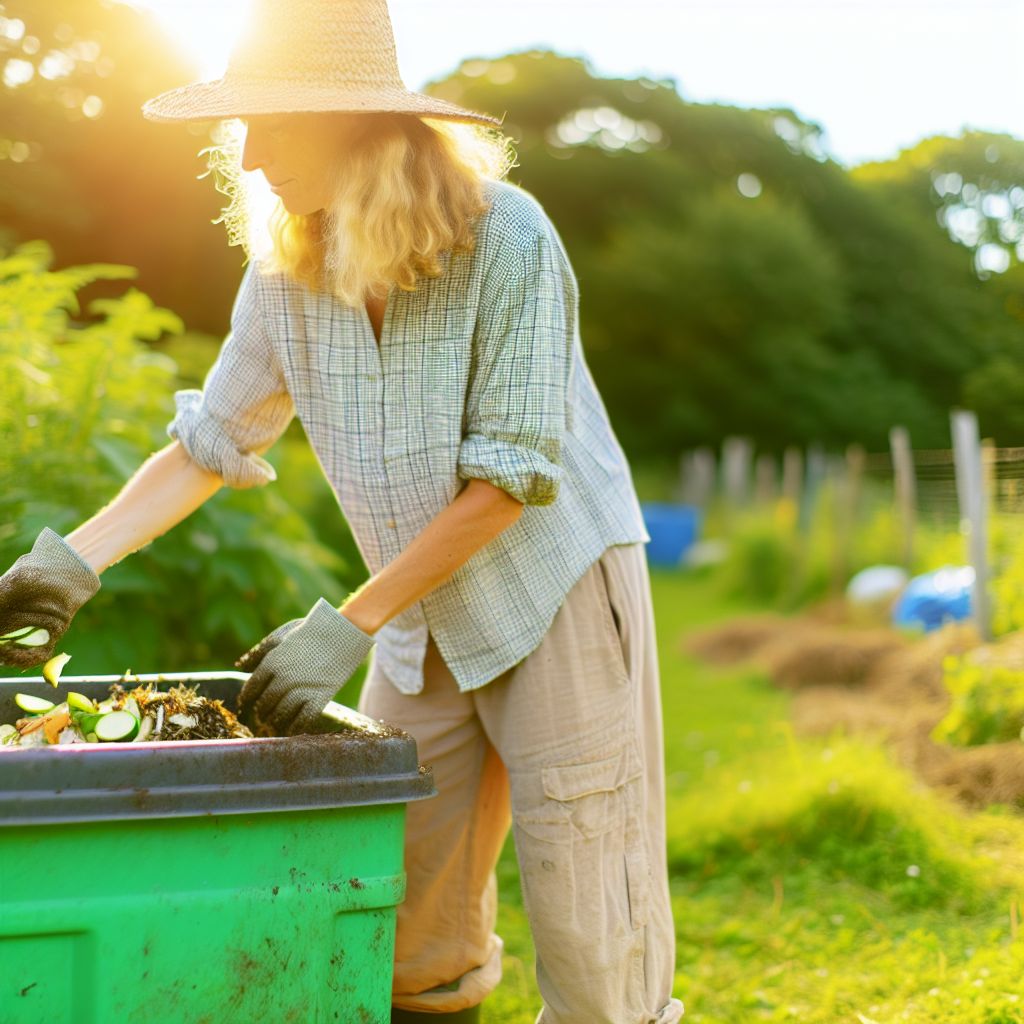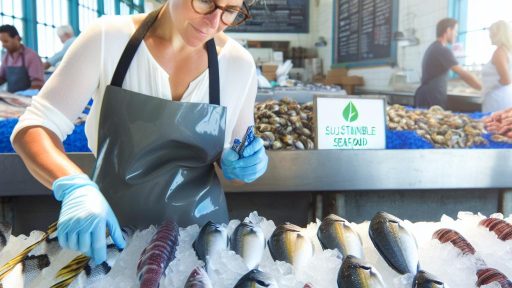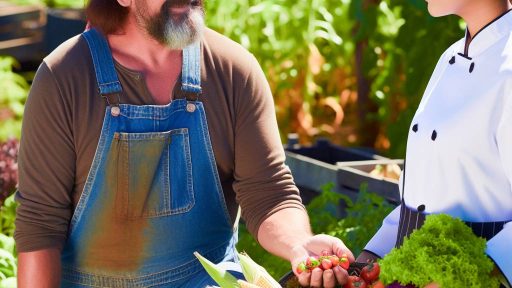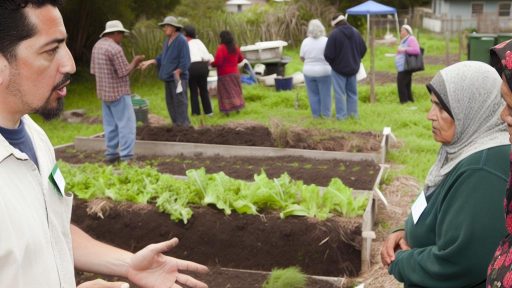Introduction to Nutrient Cycles in Agriculture
Nutrient cycles are vital to sustaining agricultural productivity.
They encompass the natural processes of nutrient input, transformation, and output.
Understanding these cycles promotes better farming practices.
It also enhances soil health and ecosystem balance.
The Importance of Nutrient Cycles
Nutrient cycles influence crop yields significantly.
Healthy soil supports nutrient availability for plants.
Furthermore, it regulates water movement and plant growth.
Without these cycles, agricultural systems would struggle to flourish.
Key Components of Nutrient Cycles
Several elements contribute to effective nutrient cycling.
These include organic matter, soil microorganisms, and livestock.
Each component plays a role in maintaining soil fertility.
Organic matter serves as a reservoir for nutrients.
Microorganisms break down organic materials, releasing nutrients.
Livestock contribute through manure, enhancing nutrient diversity.
Impact of Human Activities
Human activities can disrupt natural nutrient cycles.
Transform Your Agribusiness
Unlock your farm's potential with expert advice tailored to your needs. Get actionable steps that drive real results.
Get StartedOver-fertilization leads to nutrient runoff into water bodies.
This results in eutrophication, affecting aquatic ecosystems.
Additionally, monoculture practices diminish soil health over time.
Integrating Livestock and Permaculture Practices
Integrating livestock into permaculture designs enhances nutrient cycling.
This approach maximizes resource use while improving sustainability.
Animal waste enriches the soil with essential nutrients.
Moreover, it promotes a closed-loop system, reducing waste.
Animals can also help with pest control and soil aeration.
Strategies for Enhancing Nutrient Cycles
Farmers can adopt several strategies to reinforce nutrient cycles.
- Practice crop rotation to diversify nutrient demands.
- Implement cover cropping to protect soil during off-seasons.
- Use compost to recycle organic materials back into the soil.
- Encourage biodiversity to improve ecosystem resilience.
- Utilize agroforestry techniques to enhance soil structure.
Overview of Integrated Livestock Systems
Definition and Purpose
Integrated livestock systems combine animal husbandry with crop production.
This synergy enhances resource efficiency on farms.
Additionally, it creates a closed-loop system that reduces waste.
Benefits of Integration
This approach improves soil health through organic matter inputs.
Livestock manure acts as a natural fertilizer, enriching the soil.
Moreover, diverse systems enhance pest control and reduce disease risk.
Integrating livestock can also increase overall farm productivity.
Types of Integrated Systems
Various models exist for integrating livestock and crops.
Some farmers practice rotational grazing with cover crops.
Others may utilize agroforestry systems to accommodate livestock.
Permaculture principles often guide these integrated practices.
Challenges of Integration
Despite benefits, challenges exist in integrated livestock systems.
Managing animal health can be complicated in diverse environments.
Additionally, farmers must balance crop and livestock needs effectively.
Market access and economic viability also pose significant concerns.
Showcase Your Farming Business
Publish your professional farming services profile on our blog for a one-time fee of $200 and reach a dedicated audience of farmers and agribusiness owners.
Publish Your ProfileCase Studies and Examples
In regions like North America, farmers have successfully implemented integration.
For instance, the Smith family operates a mixed vegetable and poultry farm.
This model reduces pests while enhancing yields.
In Europe, dairy farms utilize crop rotations that include legumes.
This practice boosts soil fertility and supports livestock health.
Principles of Permaculture Design
Understanding Permaculture
Permaculture is a design philosophy that mimics natural ecosystems.
It integrates land, resources, and people sustainably.
This method focuses on cultivating a resilient agricultural system.
Core Ethics of Permaculture
Permaculture emphasizes three core ethics: earth care, people care, and fair share.
Earth care promotes responsible stewardship of natural resources.
People care encourages social justice and healthy communities.
Fair share advocates for equitable distribution of surplus resources.
Design Principles in Permaculture
Permaculture design principles guide farmers in creating sustainable systems.
- Observe and Interact: Understanding the environment is crucial.
- Catch and Store Energy: Use renewable resources wisely.
- Obtain a Yield: Ensure the system produces benefits.
- Apply Self-Regulation: Allow systems to adjust and evolve.
- Use and Value Renewable Resources: Promote sustainability over exploitative practices.
Zones and Sectors in Permaculture
Zones in permaculture help optimize space and resources.
Zone one requires the most attention and maintenance.
Zones gradually decrease in intensity and human interaction.
Sectors analyze external factors, like sun and wind, affecting the system.
Designing for Diversity and Resilience
Diversity strengthens ecosystems and makes them resilient.
Incorporating a variety of plants and animals enhances stability.
This complexity supports various ecological functions and productivity.
Implementing Integrated Livestock
Integrating livestock into permaculture enhances nutrient cycling.
Animals contribute manure, which enriches the soil.
They also assist in controlling pests and managing vegetation.
Explore Further: Food Traceability in Farming and Its Role in Consumer Trust
The Synergy Between Livestock and Crop Production
Understanding Integrated Systems
Integrated systems combine livestock and crop production effectively.
This approach maximizes resource use and improves soil health.
It fosters a symbiotic relationship essential for sustainable agriculture.
Benefits of Mixed Farming
Mixed farming enhances nutrient cycling in agricultural landscapes.
Livestock manure provides vital nutrients for crop growth.
Consequently, crops can thrive with reduced need for chemical fertilizers.
Additionally, livestock grazing can control weed populations naturally.
Improving Soil Structure
Integrating livestock helps improve soil structure significantly.
Livestock trampling can break up compacted soil and enhance aeration.
Furthermore, their droppings enrich the soil with organic matter.
This process promotes healthier root development for crops.
Enhancing Biodiversity
Mixed farming systems encourage biodiversity in farm ecosystems.
Different species contribute to a balanced agro-ecosystem.
Diverse plant and animal life can help control pests naturally.
This approach reduces reliance on chemical pesticides.
Creating Resilient Farming Systems
Integrated livestock and crop systems build resilience against climate change.
Showcase Your Farming Business
Publish your professional farming services profile on our blog for a one-time fee of $200 and reach a dedicated audience of farmers and agribusiness owners.
Publish Your ProfileThese systems promote nutrient cycling, which buffers against extreme weather.
Healthy soils retain moisture better, mitigating drought impacts.
Moreover, they can adapt to changing agricultural practices over time.
Gain More Insights: Farm Fresh Delivery Services for Urban Communities
Enhancing Soil Fertility through Livestock Manure Management
Importance of Livestock Manure
Livestock manure serves as a vital resource for soil fertility.
It replenishes essential nutrients and supports healthy plant growth.
Moreover, manure enhances soil structure, improving water retention.
Types of Livestock Manure
Different types of manure provide unique benefits.
- Cattle manure is rich in nitrogen, phosphorus, and potassium.
- Poultry manure offers a high concentration of nutrients.
- Swine manure is an excellent source of organic matter.
Best Practices for Manure Management
Implementing best practices maximizes the benefits of manure.
Firstly, proper storage minimizes nutrient loss and odor.
Secondly, composting transforms raw manure into a stable product.
Additionally, timing application to match crop needs increases efficiency.
Integration with Permaculture Systems
Integrating manure management into permaculture enhances sustainability.
For example, using manure in a composting system recycles nutrients.
Furthermore, it supports a closed-loop system that benefits all elements.
Benefits of Enhanced Soil Fertility
Improved soil fertility leads to robust plant growth.
It increases crop yields and enhances the quality of produce.
Additionally, healthy soil reduces erosion and promotes biodiversity.
Challenges and Considerations
Despite the benefits, challenges exist in manure management.
For instance, nutrient runoff can lead to water pollution.
Thus, it is vital to implement buffer zones around water sources.
Education and training in proper practices are essential for farmers.
Explore Further: Artisanal Food Production for Wildcrafted and Foraged Ingredients
Implementing Diverse Crop Rotations and Livestock Grazing
Benefits of Crop Rotations
Diverse crop rotations enhance soil health and nutrient availability.
They reduce pest populations, minimizing the need for chemical pesticides.
Crop rotation also varies plant nutrient demands, improving soil structure.
This practice boosts biodiversity, fostering a resilient agricultural ecosystem.
Integrating Livestock with Crop Production
Combining livestock with crop farming creates a synergistic relationship.
Livestock waste serves as a natural fertilizer, enriching soil nutrients.
Incorporating animals helps control weeds and pests naturally.
This integration enhances overall farm productivity and sustainability.
Implementing Grazing Strategies
Strategic grazing patterns improve land use and reduce soil erosion.
Rotational grazing systems allow pastures to recover and regenerate.
This practice reduces overgrazing, ensuring long-term land health.
Moreover, livestock can help fertilize the soil through their grazing activities.
Choosing the Right Crop and Livestock Combinations
Selecting complementary crops and livestock maximizes benefits.
For example, legumes can fix nitrogen, benefiting cereals in rotation.
Additionally, certain animals thrive on byproducts from crop production.
This creates a closed nutrient cycle, enhancing farm efficiency.
Monitoring and Adapting Practices
Regularly assessing soil health and livestock well-being is essential.
Showcase Your Farming Business
Publish your professional farming services profile on our blog for a one-time fee of $200 and reach a dedicated audience of farmers and agribusiness owners.
Publish Your ProfileFarmers should adjust practices based on observed results and ecological shifts.
This adaptability fosters resilience in an ever-changing agricultural landscape.
Ultimately, a flexible approach promotes sustainable farming methodologies.
Learn More: Farm-To-Table Events for Supporting Farm Cooperatives and Rural Growth

Case Studies of Successful Integrated Livestock and Permaculture Practices
Farmers Integrating Chickens and Crop Production
Emma Reynolds operates a small farm in Vermont.
She combines chicken grazing with vegetable farming.
This method enhances soil health and nutrient cycling.
Chickens naturally fertilize the soil with their droppings.
Additionally, they help control pests in vegetable plots.
Emma reports increased crop yields each season.
Her diverse farming system promotes resilience against pests.
Furthermore, she sells organic produce at local markets.
Pigs and Permaculture at Green Valley Farm
At Green Valley Farm, the Smith family uses pigs in their permaculture design.
Pigs are integral to their waste management system.
They assist in clearing land for new vegetable beds.
This method improves the structure and fertility of the soil.
Consequently, the farm sees better crop productivity.
The Smiths also raise chickens alongside pigs.
The chickens benefit from the areas that the pigs have disturbed.
Integrated Aquaponics and Livestock
Sunny Days Farm showcases a unique aquaponics system.
This farm integrates fish farming with vegetable production.
The fish waste acts as fertilizer for plants.
As a result, both fish and plants thrive in harmony.
Farm manager Jake Thompson emphasizes water conservation.
His system recycles water efficiently, reducing waste.
Moreover, they produce high-quality vegetables and fish for market.
Community and Education at Riverbend Farm
Riverbend Farm focuses on community engagement and education.
They host workshops on integrated livestock practices.
Farmers learn how to utilize livestock to enhance permaculture.
This model demonstrates the economic benefits of sustainable practices.
Additionally, it fosters knowledge sharing among local producers.
Riverbend Farm promotes sustainable practices that enhance local food security.
Challenges and Solutions in Implementing Integrated Systems
Identifying Common Challenges
Farmers often face significant barriers when integrating livestock and permaculture practices.
Inadequate knowledge about integrated systems can hinder progress.
Additionally, financial constraints may limit necessary investments.
Land management practices may not align with sustainable methods.
Furthermore, regulatory hurdles complicate compliance with existing laws.
Addressing Technical Knowledge Gaps
Education plays a vital role in overcoming knowledge gaps.
Training programs can empower farmers with essential skills.
Workshops held by local experts can enhance practical understanding.
Showcase Your Farming Business
Publish your professional farming services profile on our blog for a one-time fee of $200 and reach a dedicated audience of farmers and agribusiness owners.
Publish Your ProfileAdditionally, online resources and communities provide valuable information.
Securing Financial Resources
Access to financial assistance is crucial for implementing integrated systems.
Farmers can explore grants offered by government programs.
Loans specifically designed for sustainable agriculture are also available.
Collaborations with local NGOs can yield additional support.
Aligning Management Practices
Adopting holistic management practices enhances land use.
Permaculture principles can effectively guide livestock integration.
Designing systems that promote symbiosis is essential for success.
Continuous monitoring allows for necessary adjustments to practices.
Navigating Regulatory Frameworks
Understanding relevant regulations simplifies compliance with laws.
Engaging with local authorities helps clarify ambiguous guidelines.
Farmers can advocate for supportive policies that favor integrated systems.
Participating in agricultural unions can amplify their voice in these matters.
The Future of Sustainable Agriculture through Integration
Shaping Tomorrow’s Agriculture
Integrated livestock and permaculture practices shape the future of sustainable agriculture.
This new paradigm fosters resilient ecosystems and robust food systems.
Innovative approaches emphasize collaboration between plant and animal farming.
Farmers increasingly adopt integrated practices to promote soil health.
These systems recycle nutrients effectively and enhance productivity.
Benefits of Integrated Practices
Integrating livestock with permaculture offers numerous benefits for sustainability.
- Improved soil fertility occurs through natural manure application.
- Diverse crops flourish in the presence of livestock, enhancing biodiversity.
- Pest control naturally occurs as livestock graze on specific weeds.
- Water conservation becomes evident as ecosystems maintain their moisture levels.
Influence on Local Communities
Community engagement plays a crucial role in successful implementation.
Farmers share knowledge and collaborate on sustainable practices.
This partnership strengthens local food systems and economies.
Moreover, consumers benefit from fresher, healthier food options.
Challenges and Considerations
While promising, integrating these practices presents challenges.
Initial costs may deter some farmers from transitioning.
Additionally, learning curves exist for new techniques and methods.
Support from governments and organizations can help overcome these barriers.
Envisioning a Sustainable Future
Imagining a future with integrated livestock and permaculture inspires hope.
This vision promotes healthier environments and communities.
Farmers and consumers unite for a more sustainable world.
Ultimately, embracing these practices leads to robust agricultural systems.
Additional Resources
Role of organic farming for achieving sustainability in agriculture …
Permaculture Practices for Managing Livestock in a Sustainable Way




